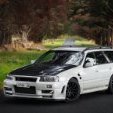Diy Compliance Impossible Now?
Announcements
-
Similar Content
-
Latest Posts
-
By sausagepianist · Posted
Hey all, I'm sorry if this has been discussed before. I have a 2008 Japanese import V36 coupe with nav but without Bose. I bought one of those AliExpress android screens, which for the most part works really well. The only thing that doesn't work is the air con controls (well sort of) and the factory reverse camera. The AC can be controlled fine but it doesn't report the change in temp and mode to the screen, and the volume knob/other audio controls from the panel don't register on the learning app. I am pretty certain that the problem is the difference in the head unit between base model (Nav but no Bose) 2007-2009 coupes and anything after 2009. Mine is the one with the blue connector all the way to the right as seen in this forum post: The reason I think this is there is one wire left over that doesn't fit anywhere on this head unit, or in the factory screen which also uses different connectors to more recent versions. I've seen the upgrade from OWC, and have sent the guy a message on eBay but no response yet. I also don't particularly need the whole kit, just *maybe* an adapter for this one cable. Did anyone else here have the same problem, or have any insight about what I can do to get this working? I have been in contact with the seller but all they seem to be able to do is ask for more pictures and videos. Minor edit to add: I have been researching and found a screen on Aliexpress that actually specifies my head unit in the listing, so these things do exist. I will contact the seller to see if the wiring adapters are interchangeable with other screens. Thanks in advance! -
I laughed so hard a snot bubble popped out my nose ! And seriously ! You can still buy a decent house in Western Sydney for 2 mill ? ?
-
Come on guys, they're just trying to sell their project car to scrape together a house deposit in the Western Suburbs of Sydney...
-









Recommended Posts
Create an account or sign in to comment
You need to be a member in order to leave a comment
Create an account
Sign up for a new account in our community. It's easy!
Register a new accountSign in
Already have an account? Sign in here.
Sign In Now